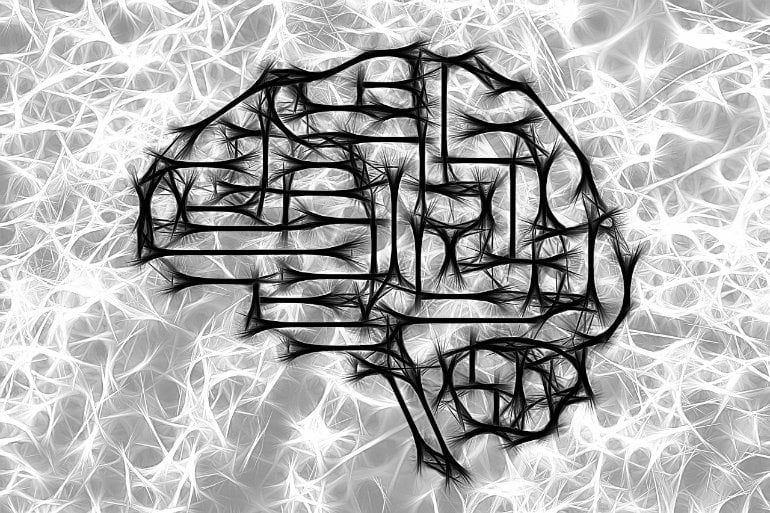Summary: Study identifies a neural pathway associated with error monitoring and attention function in some psychiatric disorders such as ADHD, ASD, and schizophrenia. Researchers say the pathway could be modulated with the help of transcranial magnetic stimulation or transcranial direct current stimulation.
Source: Mount Sinai Medical Center
Mount Sinai researchers have identified a neural pathway through which the brain detects errors and guides subsequent behavioral improvement. This process, called cognitive control, is frequently dysregulated in a wide range of psychiatric disorders.
The team’s research, published February 19 in Neuron, also suggests that neurostimulation of this brain pathway could provide an important mechanism for attention adjustments following behavioral errors.
When errors are committed, such as missing a stop sign or running a red light while driving, it’s important for our survival to immediately adapt behavior by paying more attention to prevent further errors. This ability to adapt behavior after erroneous actions is one of the key components of human cognitive control.
“Deficits in error monitoring and attentional function are common to many psychiatric problems, including schizophrenia, ADHD, and autism spectrum disorder, but little is known about the specific neural pathways that are linking these processes,” says senior author Hirofumi Morishita, MD, PhD, Associate Professor of Psychiatry, Neuroscience, and Ophthalmology, and a faculty member of The Friedman Brain Institute and the Mindich Child Health and Development Institute at the Icahn School of Medicine at Mount Sinai.
“Our study, conducted in mice and led by Kevin Norman, a graduate student in our laboratory, represents the first demonstration of a specific circuit mechanism linking error-monitoring and attentional adjustment, two fundamental components of cognitive control systems in humans.”
The neural basis of cognitive control has been a hotly debated topic within neuroscience, with a host of neuroimaging studies showing that parts of the frontal cortex, which is pivotal to planning appropriate behavioral responses to external and internal stimuli, are essential for error monitoring.

The new Mount Sinai study took that finding an important step further. In a series of experiments with mice, allowing for deployment of a full suite of neuroscience techniques not possible in humans, the researchers discovered a specific neural pathway originating in the frontal cortex that is engaged during a key aspect of cognitive control.
Specifically, they learned that task-related errors recruit frontal neurons that project signals onto the visual cortex, which processes visual information from the eye, and that this post-error activation is essential for improving subsequent behavioral performance.
“Frontal projections to visual areas are important for attention modulation of visual processing,” explains Dr. Morishita.
“Put another way, we showed that direct and specific frontal sensory projections are key pathways for linking past errors to cognitive control mechanisms that promote attention.”
Beyond its enhanced mapping of the neural circuit and function, the Mount Sinai study could have major implications for clinical treatment. The team employed a technique known as optogenetic stimulation, a biological process that employs a combination of genetic and light techniques to control the activities of individual neurons to selectively stimulate the frontal projections to the visual cortex.
By employing this technique, the researchers were able to improve attention in these mice once light pulses were administered to them after errors. The specific cortical pathway identified in this study could potentially be modulated using techniques like transcranial magnetic stimulation and/or transcranial direct current stimulation to improve post-error attentional adjustments in many of the most common types of psychiatric disorders.
“On a larger scale, our findings resolve the conflicts among recent studies reporting mixed contributions of frontal-sensory circuits to attentional behavior by suggesting that this circuit is only recruited under certain conditions, namely following task-related errors,” says Dr. Morishita. “For that reason, we believe our research will have broad interest and impact the fields of neuroscience, psychology, psychiatry, and neurology, while informing neuroscience-based computational models of cognition.”
About this psychology and neuroscience research news
Source: Mount Sinai Medical Center
Contact: Elizabeth Dowling – Mount Sinai Medical Center
Image: The image is in the public domain
Original Research: Closed access.
“Post-error recruitment of frontal sensory cortical projections promotes attention in mice” by Hirofumi Morishita et al. Neuron
Abstract
Post-error recruitment of frontal sensory cortical projections promotes attention in mice
Highlights
- •Top-down frontal sensory projections are selectively recruited after error trials
- •30-Hz optogenetic stimulation of top-down neurons promotes post-error performance
- •Post-error performance adjustment requires anticipatory top-down activity
- •30-Hz optogenetic top-down stimulation promotes a hallmark feature of attention
Summary
The frontal cortex, especially the anterior cingulate cortex area (ACA), is essential for exerting cognitive control after errors, but the mechanisms that enable modulation of attention to improve performance after errors are poorly understood.
Here we demonstrate that during a mouse visual attention task, ACA neurons projecting to the visual cortex (VIS; ACA VIS neurons) are recruited selectively by recent errors. Optogenetic manipulations of this pathway collectively support the model that rhythmic modulation of ACA VIS neurons in anticipation of visual stimuli is crucial for adjusting performance following errors. 30-Hz optogenetic stimulation of ACA VIS neurons in anesthetized mice recapitulates the increased gamma and reduced theta VIS oscillatory changes that are associated with endogenous post-error performance during behavior and subsequently increased visually evoked spiking, a hallmark feature of visual attention.
This frontal sensory neural circuit links error monitoring with implementing adjustments of attention to guide behavioral adaptation, pointing to a circuit-based mechanism for promoting cognitive control.







